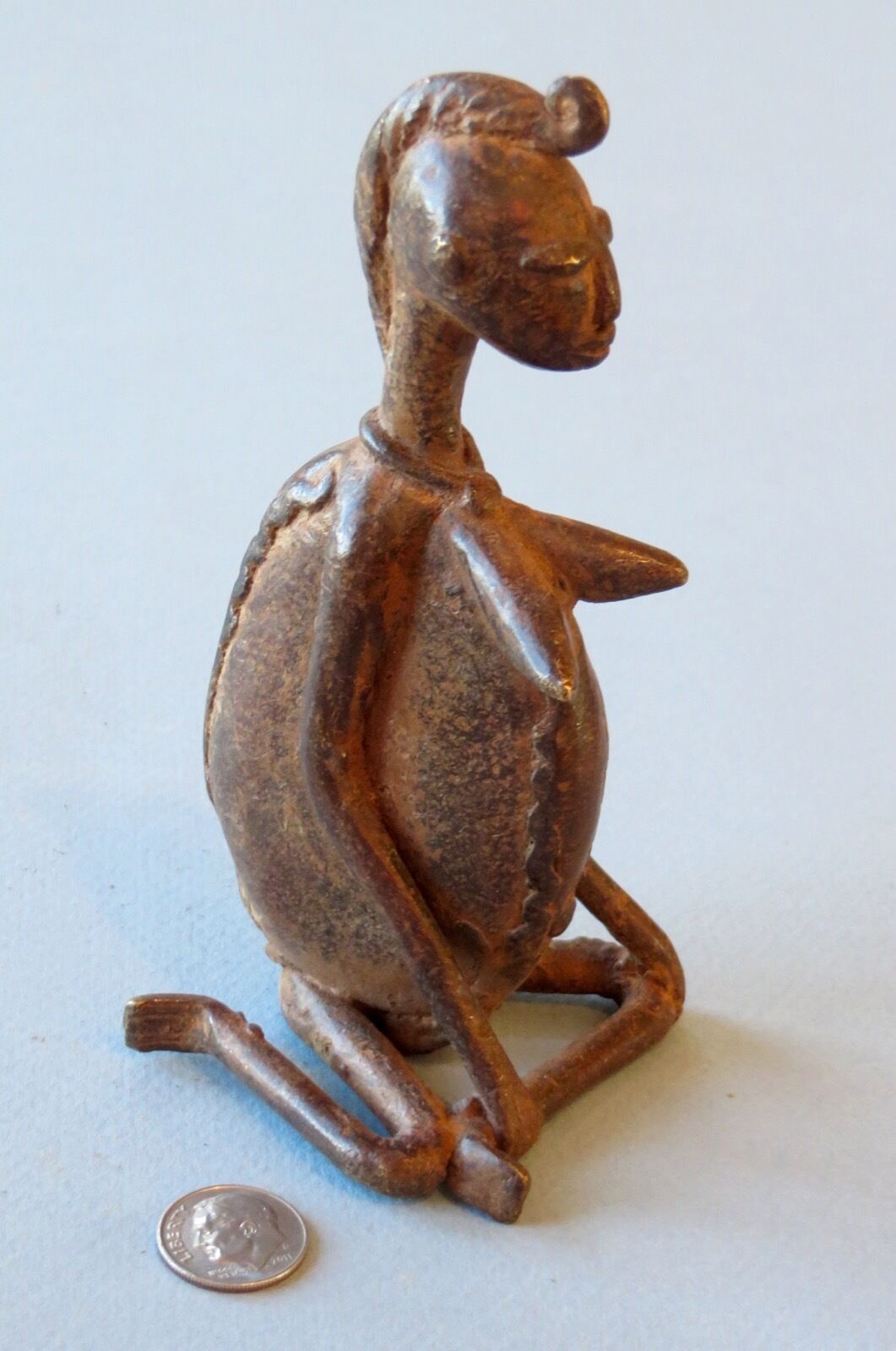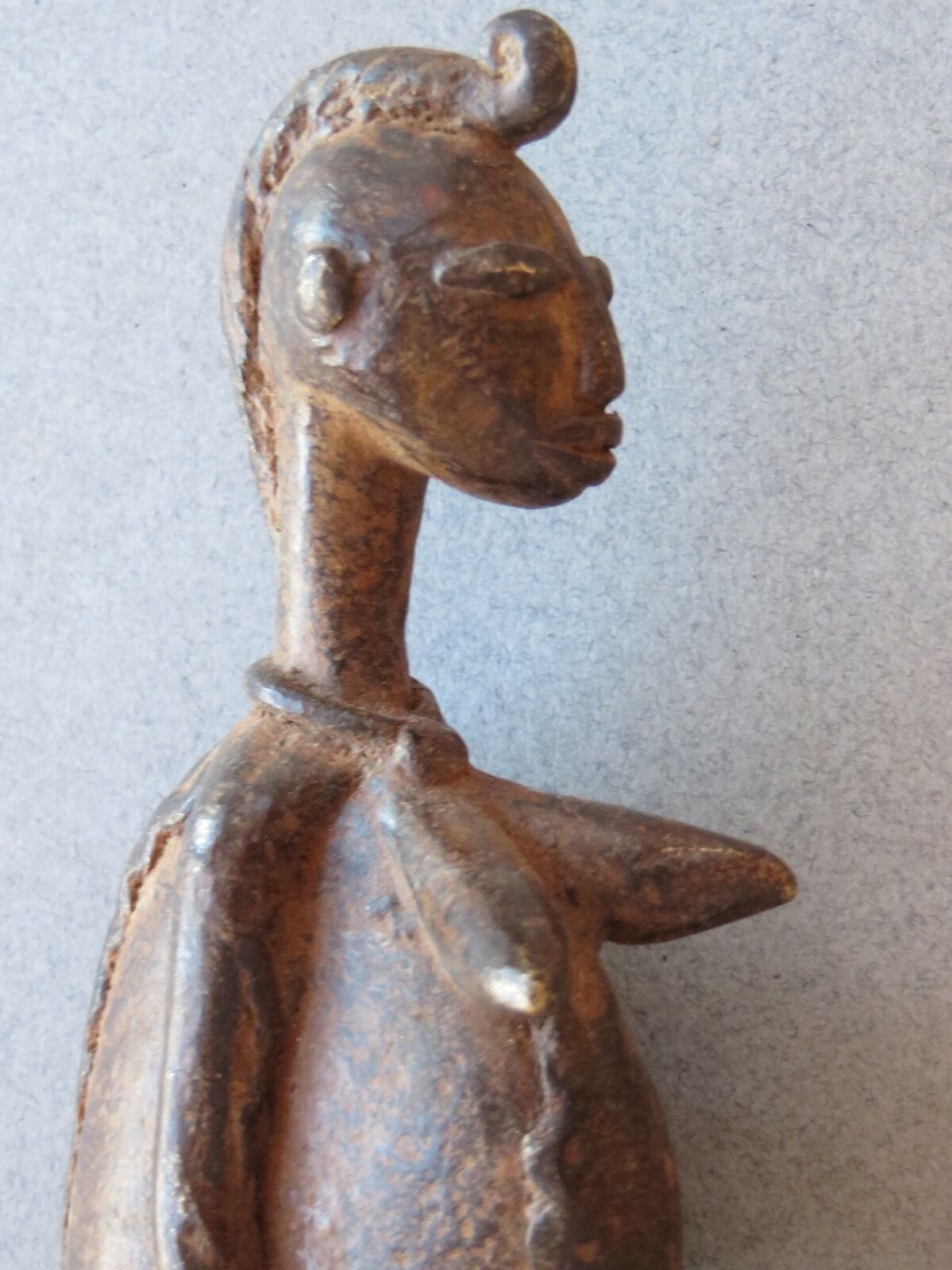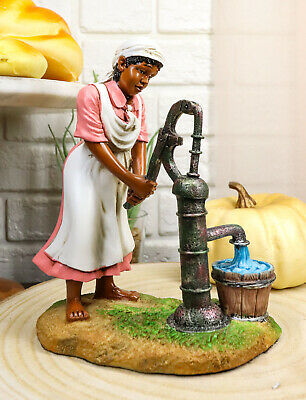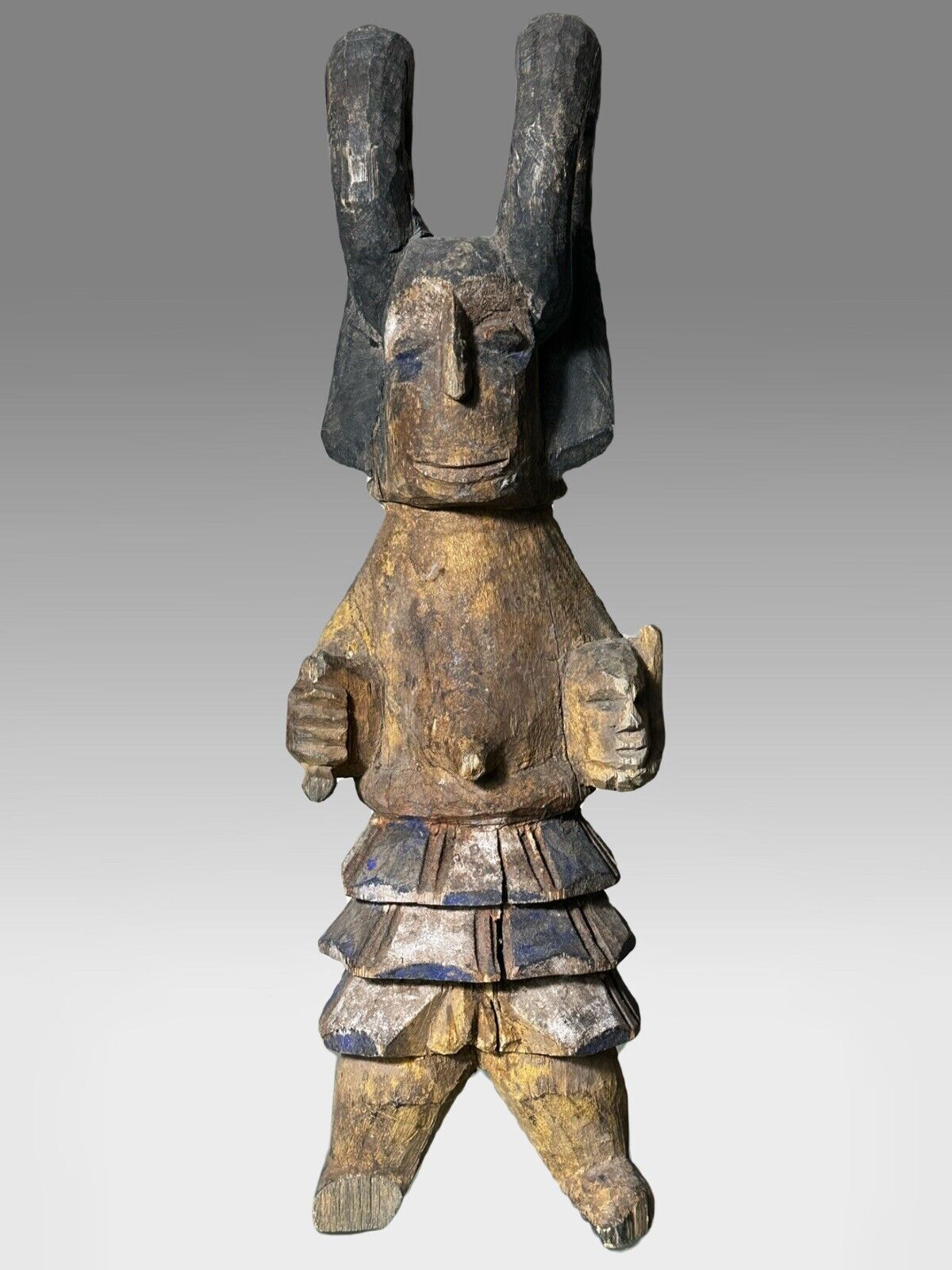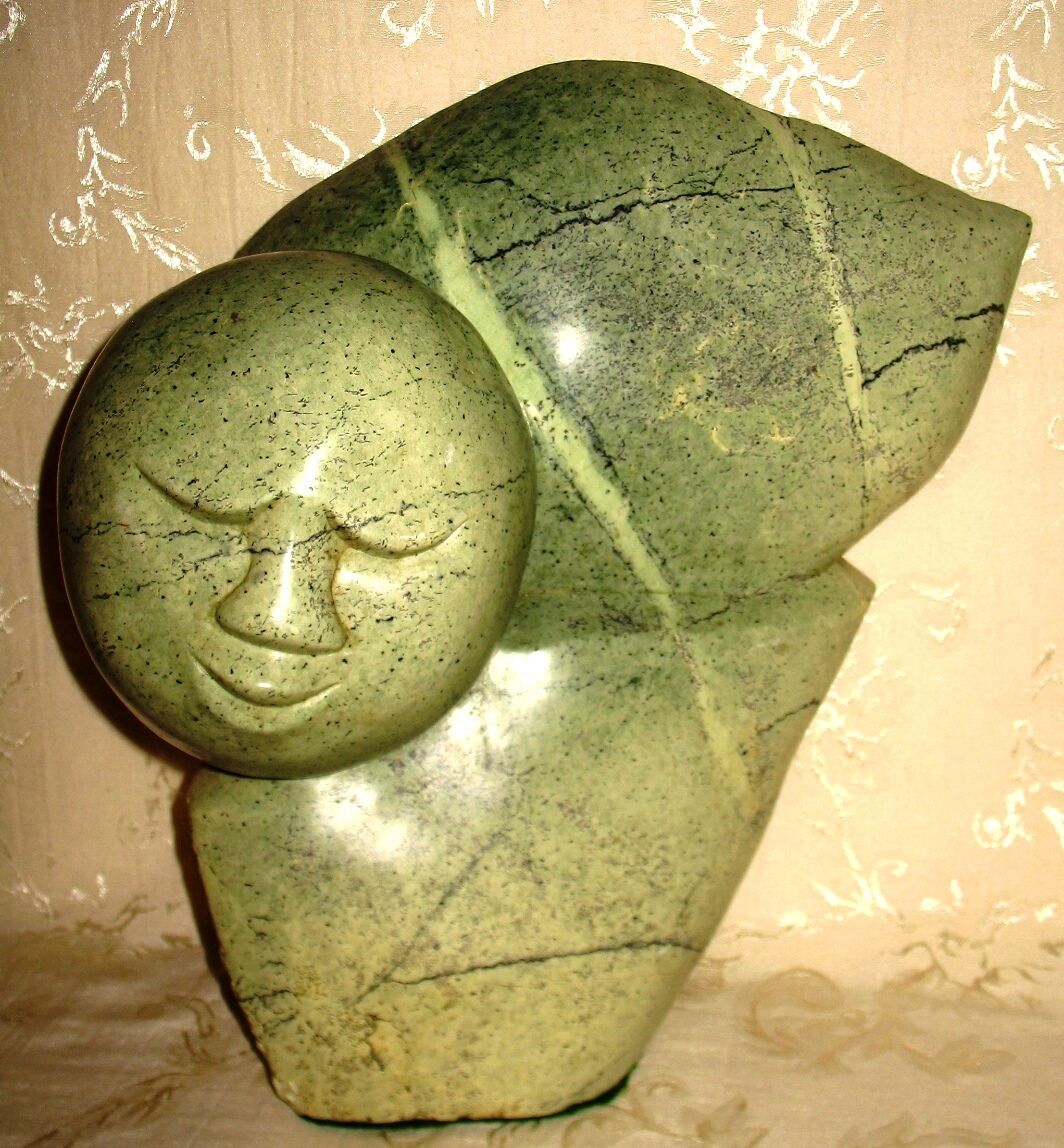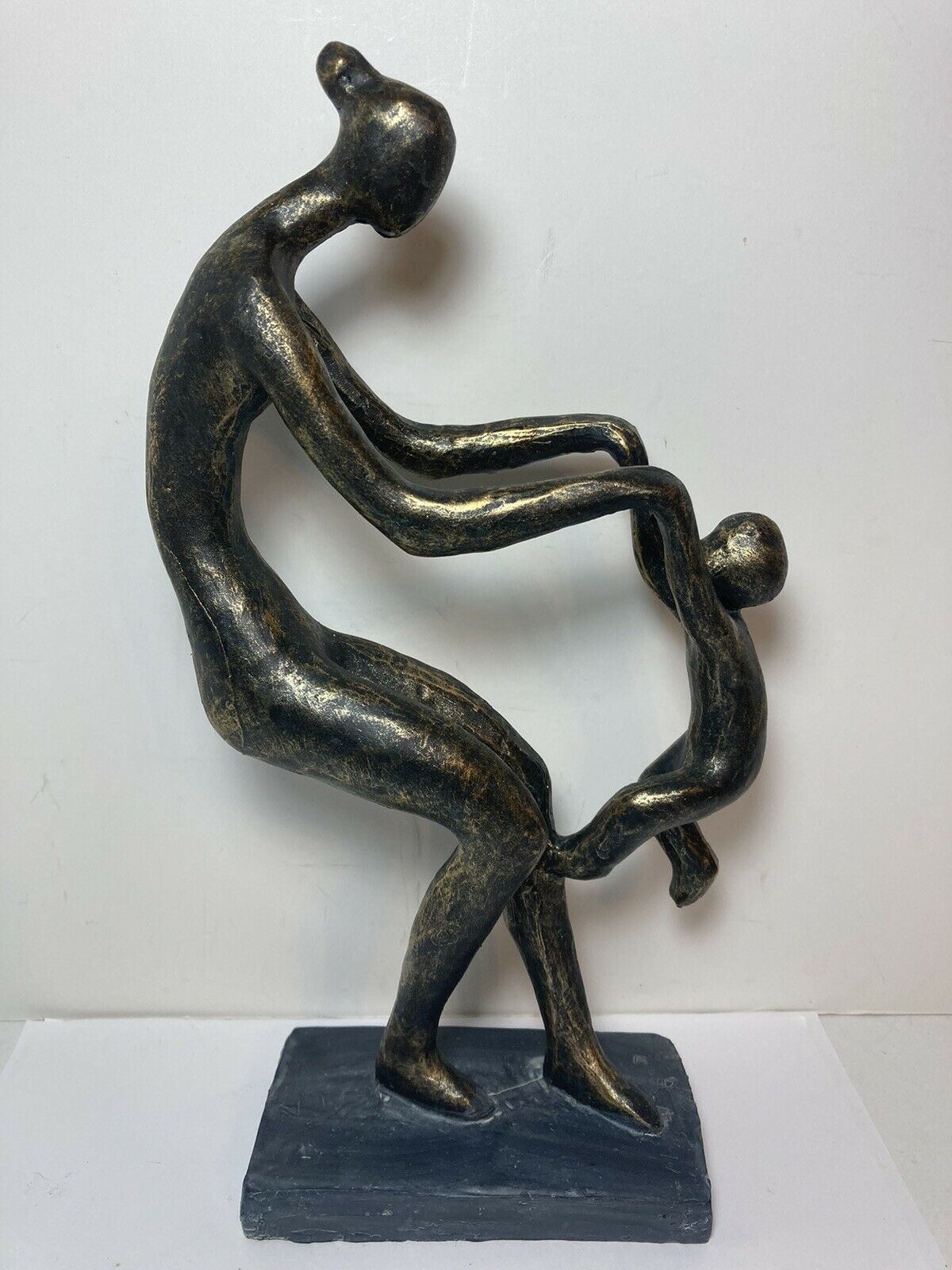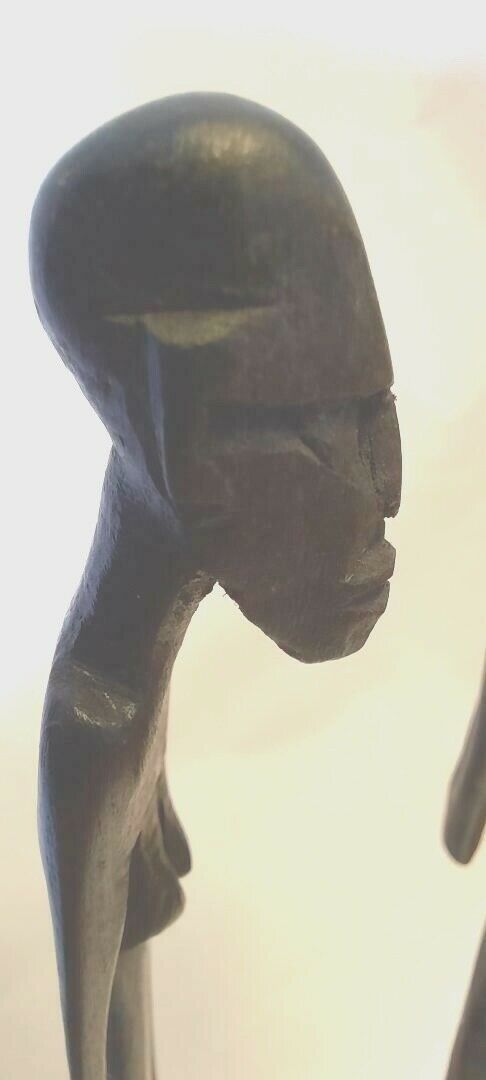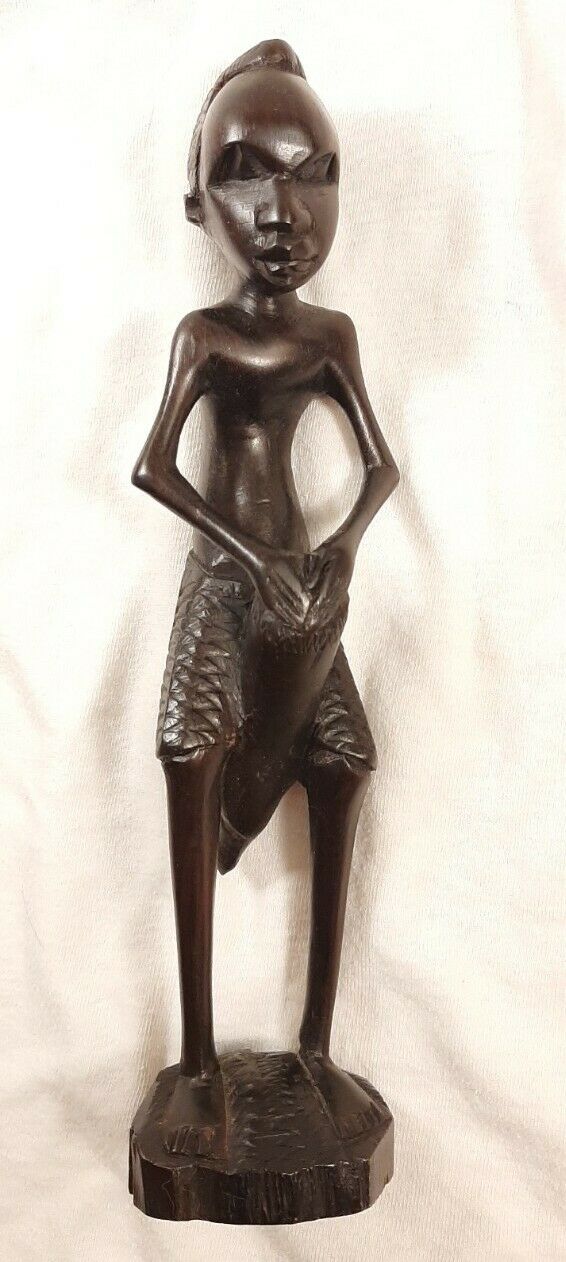-40%
Antique Cast Bronze Dogon, Mali Rare, Strange (Tortoise?) Figure, 5 1/4” H
$ 118.8
- Description
- Size Guide
Description
Rare, unusual, and old Dogon cast bronze female figure, 5 1/4" H, that had “stumped" me as I tried to figure out its meaning! I collect small African bronze works, since I am a sculptor (in the past working in bronze), and I have never seen works like this one, with the human head, arms and legs, on a round, flat body that I thought must have some symbolic meaning. I did find any similar to it in my many African books or on the internet. I was especially interested since this is part of a group I bought, along with many other older Dogon bronzes. Each of the ones of this type are different, with different designs on the center, some male and some females, etc. My African friend, who found and sold me these pieces, told me thatfigures such as this one, and the other wonderful pieces in the collection I was
able to buy, had various meanings for the individuals who owned them. They would have been taken into the “society house” (similar to a meeting place, church, shrine); used for various rituals or individual, personal issues; placed in family shrines; or even buried with the dead.
One good source on Dogon art, “Dogon Cliff Dwellers, The Art of Mali’s Mountain People”, by Pascal James Imperato, 1978, for an exhibition through the L. Kahal Gerrery in NYC, gave some information to add in solving the mystery:
1. “Dogon art encompasses a wide variety of forms which often represent beings and events which are part of Dogon mythology. Such themes are presented primarily in wood, but also in iron, copper, brass (bronze), beads and cloth….Statuary and small metal objects were far less numberous than masks (but) their survival rates were higher because they were not subjected to stress use, were more carefully housed and were not ritually destroyed nor discarded”. From this information I have no doubt that these pieces have a great deal of age to them, as shown by the patinas and surface. I will also add that, as war and the economy has affected Mali, (see the movie “Timbuktu”) and other African countries, many people have been selling older family collections to survive, and older pieces are currently becoming available.
2. There are many “cults” within the Dogon, relating to Dogan ancestors, and totemic animals. A extensive reading of these myths may offer more information but it is not my place to do that here. However, I did also find that “the tortoise occupies a special place among the Dogon because it was present as a witness to the mythical acts of creation. Live tortoises were once kept by lineage heads….and the tortoise assumed the role of a patriarch during his absence”. These pieces cetainly seem to me as having tortoise bodies! (I decided that was the answer, and just recently it was confirmed when I saw a book showing a similar image that the author called a tortoise!)
Sorry for my long
“dissertation”, but in my “former life” I also did research for Encyclopaedia Britannica, and I alway have a “need to know” about certain things! I hope my customers appreciate it. Also, FYI, bronzes such as this are made in the lost wax process, where a mold is put over a wax original, the wax burned out, and the void replaced with molten metal. Each piece is unique.
_gsrx_vers_779 (GS 7.0.4 (779))
